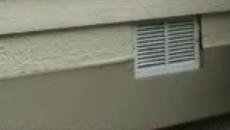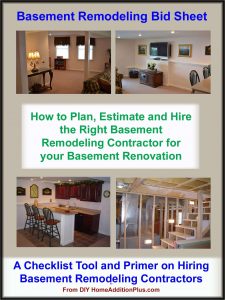Crawl Space Vents and Vapor Retarders Protect Homes from Moisture Damage
By Mark J. Donovan
|
|
Venting crawl spaces is critical for protecting the longevity of a home. An unventilated crawl space is a harbinger for mold and mildew due to ground moisture build up in the crawl space. Moreover, crawl space moisture has the tendency to condense onto crawl space framing and subfloor sheathing surfaces, which over time can lead to rot, and threaten the overall structural integrity of the home.
Decades ago houses were built so loosely that venting crawl spaces was unnecessary. Today, however, homes are built much tighter and thus moisture can become easily trapped in the home where dangerous molds and mildew can form. |
A crawl space is on the front lines for accumulating ground moisture and being threatened by mold, mildew and rot since it is in direct contact with the ground. Consequently venting crawl spaces is necessary to protect the home from structural damage and the threat of molds and mildew.
There are powered crawl space vents with motorized fans that can help to draw the moist air out, but in my opinion they are just a more expensive solution for treating a symptom rather than the actual problem.
| To really solve crawl space moisture problems, the ultimate solution is to prevent the ground moisture from actually entering the crawl space altogether. The best way to do this is to install a vapor retarder, or moisture barrier, on the floor of the crawl space. The moisture barrier should partially fold up the sides of the basement crawl space and be fastened to the basement walls with either a special tape or with pressure treated framing lumber to create a tight seal.
Additionally, sand and then gravel should be installed over the vapor retarder to allow you to move on the crawl space floor without damaging the vapor retarder. |
 |
By installing a vapor retarder you can effectively eliminate the bulk of the ground moisture permeating up from the crawl space floor, and as a result eliminate the need for venting the crawl space altogether. This said, I would still suggest including the crawl space vents in conjunction with the moisture barrier. By doing both you will eliminate the threat of crawl space moisture and be sure to satisfy your local building inspector.
For more help on Basement Additions, see HomeAdditionPlus.com’s Basement Remodeling Bid sheet. The Basement Remodeling Bid Sheet will help ensure that your hire the right contractor so that your basement remodeling project is done correctly and you get the project finished on time and budget.
Related Information
Get Free Basement Remodeling Price Quotes with No Obligation!
Fill out our 3-5 minute quick and easy form, and receive a free price quote on basement remodeling from one of our prescreened and licensed basement remodeling contractors. This process is free and there is no obligation to continue once you receive your basement remodeling price estimate.

